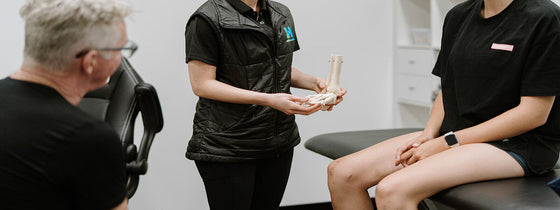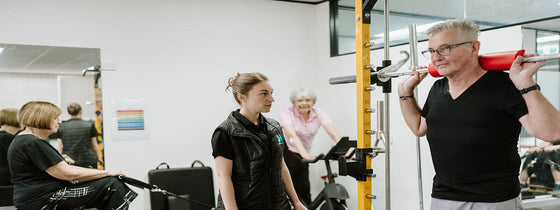What is osteoarthritis?
Osteoarthritis (OA) is a joint condition characterised by inflammation and changes to the joint capsule, bone, cartilage, and muscles. If you have OA you are definitely not alone, as 1 in 11 Australians (2.1 million) on average are also diagnosed with the condition, with the hips and knees being the most commonly affected joints. Don’t let this worry you though, because the good news is that there is a proven strategy that can help you to manage your symptoms of hip/knee OA, and improve your level of function that could be just as beneficial as surgery! But first, let’s debunk some myths about OA.
Facts and myths about knee/hip OA
What do the guidelines say?

The Royal Australian College of General Practitioner (RACGP) guidelines recommend exercise, along with education and weight management, as first-line therapies in the management of OA. Education refers to gaining a good understanding of how you can self-manage your OA. Weight management (if appropriate) is included as a first-line therapy, given that higher body weight places greater load on our hips and knees, which can worsen symptoms of OA. Losing as much as 5% of your body weight can significantly reduce symptom severity.
Second-line therapies include pharmacological pain relief, aids and manual therapy. Meanwhile, surgery is recommended as a third-line treatment, and should only be considered if the first two lines of therapy are not effective in relieving symptoms and improving function. Importantly, these two lines of treatment should still be combined with exercise therapy, education and weight management.
GLA:D program

GLA:D (Good Life with osteoArthritis: Denmark) is an education and exercise program, created by researchers in Denmark for people with hip or knee OA symptoms. The success of this program has led to it being implemented internationally.
The GLA:D program involves two 1-hour exercise classes per week across six weeks. The exercises in this program are simple but effective in improving joint control, movement quality, strength, trust in your hip/knee and function during daily living and sport. The program also includes two education sessions, run by a GLA:D trained physiotherapist, where you will learn about understanding OA, treatment options, exercise and self-management.
Why we think you’ll be ‘glad’ you did it
Regardless of age, OA severity, functional status or pain levels, exercise therapy is strongly recommended for all people with hip/knee OA. Compared to other treatments, such as manual therapy, medications and injections, exercise therapy is cost-effective and is the most effective non-surgical treatment for hip/knee OA. In fact, research from the GLA:D program in Australia shows an average pain reduction of 36%, significant improvement in joint confidence, less reliance on pain relief medication and a reduction in perceived need for surgery! This program offers a structured, easy-to-follow and guided management plan.
Despite these promising results, the GLA:D program may not be suitable for all people with hip/knee OA. Thus, it is recommended that you consult with your physiotherapist to see whether this program would be appropriate for you.

OHL is integrating a new athletic screening assessment into its practice to further enhance our community's sporting ability. This screening assessment combines range of motion, strength profiling, force deck analysis, and subjective training status to give athletes a comprehensive performance snapshot. By establishing a baseline and identifying key areas for improvement, we can tailor your training to enhance performance, provide insight on key metrics, and stay resilient throughout the season. Whether you're preparing for preseason, managing midseason demands, or simply aiming to train smarter, this assessment delivers the data-driven insights you need.

If you're experiencing back or neck pain with neurological signs and symptoms, a thorough neurological examination is crucial for accurate assessment and effective treatment. In this Optimal Tip learn more about what we mean by completing a neurological exam!

Squats, deadlifts, and calf raises are key movement patterns that should be part of every strength and conditioning program—regardless of age and activity level. These functional movements support joint health, improve posture and balance, and reduce the risk of injury while building strength where it matters most.